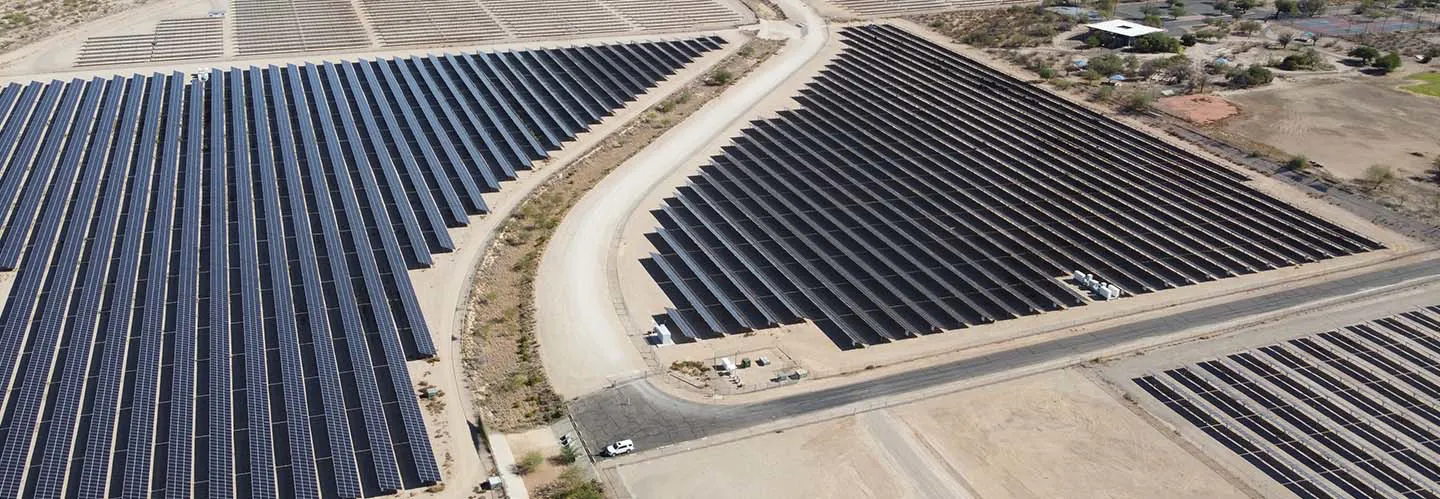
Long-term solutions for climate change resilience
This month, the Biden administration allocated over $3.46 billion to bolster climate change resilience. These funds will be channeled through FEMA's Hazard Mitigation Grant Program, supporting states, tribes, and territories in projects that mitigate climate change impacts. Regions under the 59 major disaster declarations since the Covid-19 pandemic's onset can access this funding, which prioritizes infrastructure protection against flooding and promotes nature-based solutions.
The University of Arizona (UA) Solar Zone exemplifies the effective use of Engineered Earth Armoring Systems. For over ten years, these systems have shielded a solar park from flood and erosion damage, reduced carbon emissions, and offered sustainable benefits compared to rock riprap or concrete methods.
The UA Solar Zone at Tech Park in Tucson, a global frontrunner in solar energy research, sprawls across 81 hectares (200 acres). It boasts a modern 5 MW (5 million watts) solar plant with 95,000 solar panels and over 100 solar concentrators, producing power and serving as a nexus for solar energy research and commercialization.
During its 2010 construction, a central drainage channel was integrated to manage stormwater runoff. Budget constraints led to the decision to use a cost-effective flexible channel liner, offering significant savings and meeting hydraulic and erosion control specifications, over traditional hard armoring techniques.
PROPEX® Pyramat® 75, a high-performance turf reinforcement mat, was chosen due to its durability, UV resistance, tensile strength, and erosion control abilities, especially in the harsh conditions of Tucson. UV degradation often compromises many armoring systems, but PROPEX Pyramat 75 showed exceptional resistance, retaining 90% of its tensile strength after significant UV exposure, making it ideal for arid regions.
Tensile strength is vital for an HPTRM, especially against non-hydraulic stresses like vehicular traffic and animal loading. PROPEX Pyramat 75's tensile strength ensured its durability and performance against the channel's design flows, which ranged from 8.55 to 17.94 m^3/s (302 to 634 ft^3/s). Its design also supports vegetation, crucial for water quality and erosion control. Colorado State University research indicates that HPTRMs significantly enhance the hydraulic performance of natural vegetation and offer protection even in non-vegetated environments. PROPEX Pyramat 75's patented trilobal X3® Fiber Technology further boosts rapid vegetation growth.
While concrete alternatives were considered, they posed higher costs and gave a less natural appearance. In contrast, the PROPEX Pyramat 75 provided an eco-friendly facade with impressive vegetation in the arid desert. Environmentally, its carbon footprint is 2.7 kgCO2e per 1 m^2 (0.56 lbsCO2e per 10.76 ft^2) of material. Furthermore, it decreases sedimentation, fosters water infiltration to the groundwater, and is recognized by the EPA as a Best Management Practice for water quality enhancement.
The design engineer's prior positive experience with PROPEX Pyramat 75 played a part in its selection, with approximately 3,851.6 m^2 (41,500 square yards) installed along the channel.
After a decade, the PROPEX Pyramat 75 remains robust, effectively tackling Tucson's extreme conditions and flood incidents. The channel boasts considerable vegetation, safeguarding the UA Tech Park solar field and ensuring efficient drainage.
Explore more blogs
View allHow to combine engineered earth armoring with greywater treatment
Resilient water management by combining greywater recycling with engineered earth armoring for irrigation, erosion control, and increased property value.
How can geosynthetics help energy transition?
Geosynthetics accelerate agricultural outputs and improve resilience by optimizing water management through enhanced irrigation efficiency and providing structural stability to agricultural infrastructures like dams and reservoirs.
How can geosynthetics accelerate agriculture outputs and improve resilience?
Geosynthetics accelerate agricultural outputs and improve resilience by optimizing water management through enhanced irrigation efficiency and providing structural stability to agricultural infrastructures like dams and reservoirs.